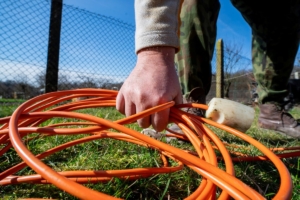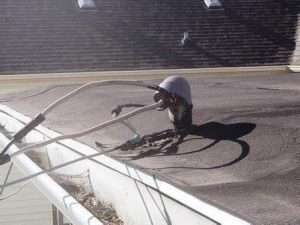The Worst Electrical Panels Found in Homes and Why?
In 2023, there are a ton of home buyers that are buying in cash to be able to compete while the inventory levels are low. They are waving appraisal contingencies and sometimes the home inspection too.
While this may work for some buyers such as investors that typically have an understanding of additional costs they may incur from the purchase other retail buyers that are using cash are running into insurance coverage issues because of the home’s older components.
Having an old electrical system can keep you from being about to insure it in Florida.
Electrical panel defects are one of the most common hazardous defects found during a home inspection. Electrical panels are the main source of electricity in a home and it is important to ensure that they are in working order. If a panel is found to be defective, an electrician should be called to inspect and repair or replace the panel as necessary.
Common electrical panel defects include: burnt wiring, loose connections, faulty breakers, corrosion, improper grounding, and outdated components. It is important to have an electrician inspect any potential defects in order to avoid electrical shock and fires. Additionally, it is important to have the wiring checked regularly as part of routine maintenance, especially if the home is older or has been remodeled.
What are the worst electrical panels?
The most common bad electrical panel brands…..: Federal Pacific, Sylvania, and Zinsco, however, it is surprising how often distribution or sub-panels are incorrectly wired. I find this often while inspecting in older communities in Miami and Fort Lauderdale areas.
Federal Pacific Panel
These breakers were commonly installed in homes around the United States from the 1950s to the 1990s. Several tests over the years have shown that one in four of these breakers will be defective and not properly trip, causing a fire hazard. Don’t be a victim of something that is preventable. Check your panel today.
Zinsco Panel and Sylvania Panels
Zinsco was a very popular electrical panel brand. While there are very few of these breakers in operation today, because of their popularity, we still occasionally run across them in older homes. As society’s electrical demands increased, these breakers were not able to keep up. It was found that they would allow electricity to burn until the wires melted, leaving homes at risk of fire and homeowners at risk for shock.
Sylvania panels were used in the US in the 60s and 70s. They were Zinsco panels, bought out by Sylvania, and the only major change in the panel was the Sylvania logo. They have the same problems as Zinsco panels. If you have one of these breakers, they are also uninsurable.
ITE/Bulldog Pushmatic Panel
ITE electrical panel problems: ITE electrical panel breakers are so old they don’t manufacture any replacement parts anymore. Besides being archaic, they’ve are also grease-fed breakers, which means that if they are not used and serviced regularly, they become difficult to operate. If you have one of these, you definitely need an update.
Challenger (Eaton/Cutler-Hammer)
Over the years it was discovered that two types of circuit breakers manufactured by Challenger were overheating under NORMAL conditions at the connection point to the bus bar. This causes expansion and contraction, which in turn causes arcing between the circuit breaker and the bus bar, thus damaging both.
Other Worst Electrical Panel Type
Fuses have not been installed in homes for many decades. Electrical codes change every three years to continually improve the safety of electrical systems that are installed. As a result, no fuse panel currently in use in any home in the United States would comply with minimum code standards in effect today.
Just like other components in the home, you should have your electrical components updated and replacements completed as needed. Your home may not have one of the older electrical panels mentioned but replacement is suggested every 20-30 years or so. Click to read about 10 signs its time to replace your electrical panel.














Pingback: Federal Pacific Electrical Panel Can Be Dangerous (2023 Guide) - GGR Home Inspections